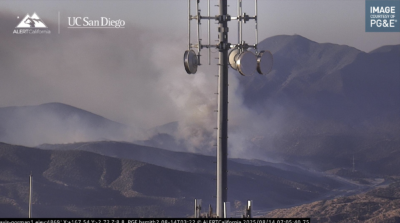More and more businesses are moving to the cloud. It’s easy to see why. Cloud platforms offer speed, flexibility, and lower costs. They make it possible to scale fast and work from anywhere. But while the cloud brings clear benefits, it also brings risks that many businesses overlook.
Too often, companies assume that the cloud is secure by default. They think using a trusted provider means their data is fully protected. But cloud security doesn’t work that way. The truth is, cloud platforms are only as secure as the way they’re used. And many companies aren’t using them carefully enough.
Cyberattacks are increasing, and cloud systems are a frequent target. A single mistake—like an open storage folder or weak access settings—can lead to major problems. Data leaks, service outages, and damaged reputations can all follow.
The good news? These problems are often preventable. By understanding the most common mistakes and taking simple, smart steps, businesses can protect themselves better.
Here are some of the key things businesses get wrong—and what they can do instead.
Assuming the Provider Handles Everything
One of the most common errors is thinking your cloud provider handles all security. That’s not true. Providers like Microsoft Azure or Amazon Web Services do protect their part of the system. They keep their data centers secure and patch their own tools.
But what happens inside your account? That’s on you. You control the setup, the data, the apps, and the users. If someone in your team sets up a database without a password, or uploads sensitive files to an open folder, the provider won’t stop it.
Security in the cloud is shared. The provider secures the infrastructure. You’re responsible for how you use it. Knowing where that line is—and staying on top of your part—is crucial.
Poor Access Control
Another weak spot is access control. Too many users have too many permissions. It’s common to give full access to people who don’t need it, just to make things easier.
That’s risky. If one account gets hacked, the attacker can often go much further than they should be able to. This makes small errors turn into major threats.
The best practice is to follow the “least privilege” rule. Give users only the access they need. Review permissions regularly. Remove access when people leave or switch roles. And always use two-factor authentication. It’s simple, but very effective.
Skipping Regular Testing
Even with strong settings, things can still go wrong. That’s why regular testing is essential. Many companies don’t test their cloud systems until after something bad happens.
A better approach is to use cloud pentest services. These are controlled security tests that look for weak spots in your setup. Skilled testers try to find the same paths an attacker might use. Then they show you what they found and how to fix it.
This kind of testing helps you find risks early. It also gives you peace of mind. You don’t have to guess if your cloud setup is secure—you’ll know.
No Plan for When Things Go Wrong
Prevention is important. But response matters too. If something bad happens, do you have a plan?
Many companies don’t. That means they panic or make mistakes in the moment. A breach that could’ve been small turns into a big crisis.
Build a response plan. It should cover how to detect a problem, who to alert, and how to contain and fix it. Practice it with your team, so everyone knows what to do.
Trusting Tools Too Much
Security tools help. But they can’t do everything. Some businesses think buying the latest tools will solve their problems. But tools still need people who understand how to use them and respond to alerts.
Good cloud security blends smart tools with smart people. Train your team. Make sure everyone—from IT to leadership—knows their role in keeping data safe.
Why Regular Reviews Are Key to Staying Secure
Your cloud setup may work well today, but things rarely stay the same for long. Teams grow, projects change, and new services or tools get added. Even small updates can create gaps in your security. That’s why regular reviews aren’t just helpful—they’re necessary.
Make it a habit to check your cloud settings, user permissions, data access levels, and activity logs. Look for changes, outdated accounts, or any signs of misconfiguration. Regular reviews help you catch small problems before they turn into serious risks. Set a schedule and stick to it. The longer you wait, the more you could miss.
Why Cloud Security Is Everyone’s Responsibility
Cloud security isn’t something that only the IT team should think about. Every person in the company has a role to play. One careless click on a phishing email or one weak password can open the door to an attack. These small mistakes often lead to big problems.
Build a company culture that takes security seriously. Provide training that’s simple and clear. Encourage people to ask questions if they’re unsure about something. Recognize and reward employees who follow safe practices. When everyone understands that they’re part of the defense, your business becomes much harder to breach.
Wrapping Up
Cloud platforms offer major advantages. But they don’t take care of everything for you. If you assume you’re covered, skip testing, or forget to plan for mistakes, you’re taking a big risk.
Stay proactive. Use tools like cloud pentest services. Check your access settings. Build a clear plan for responding to threats. And keep reviewing your systems as things change.
Security isn’t a one-time task. It’s an ongoing habit—and a smart investment in your business.






